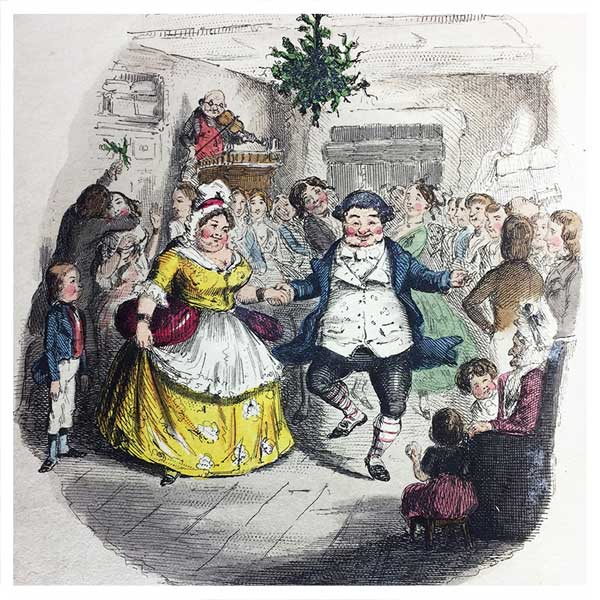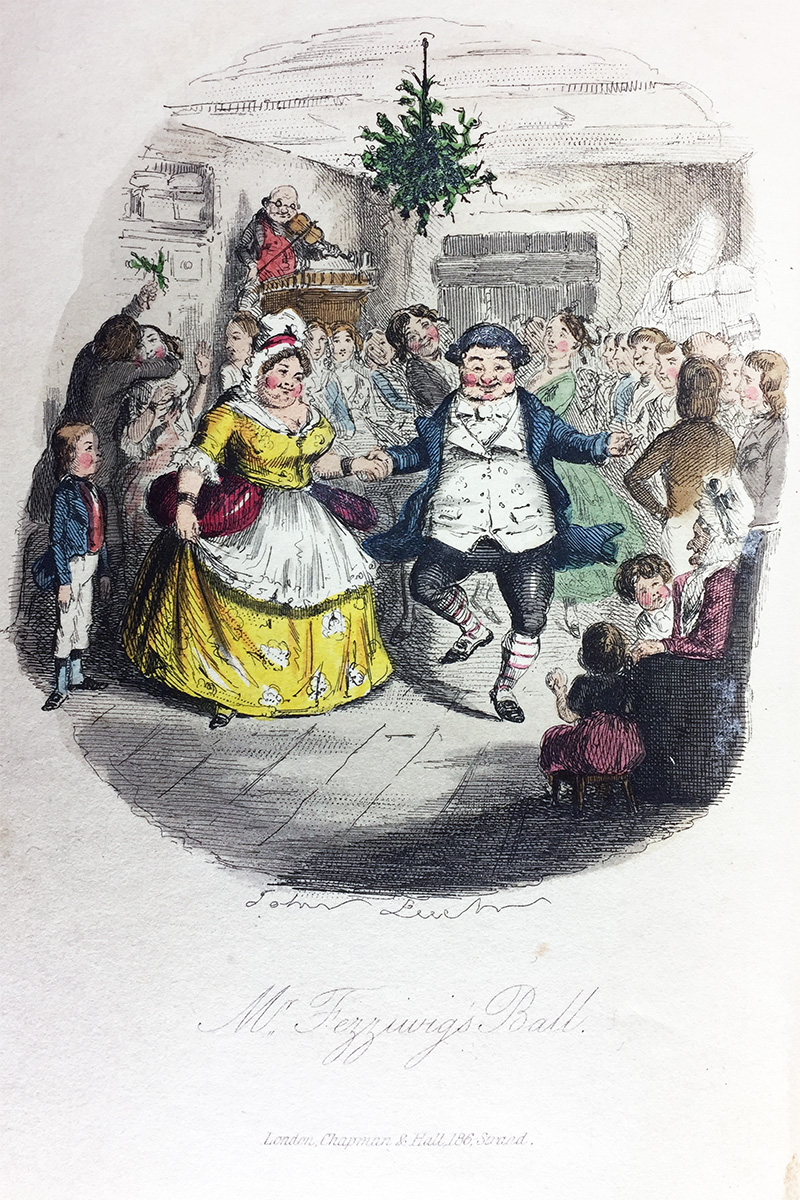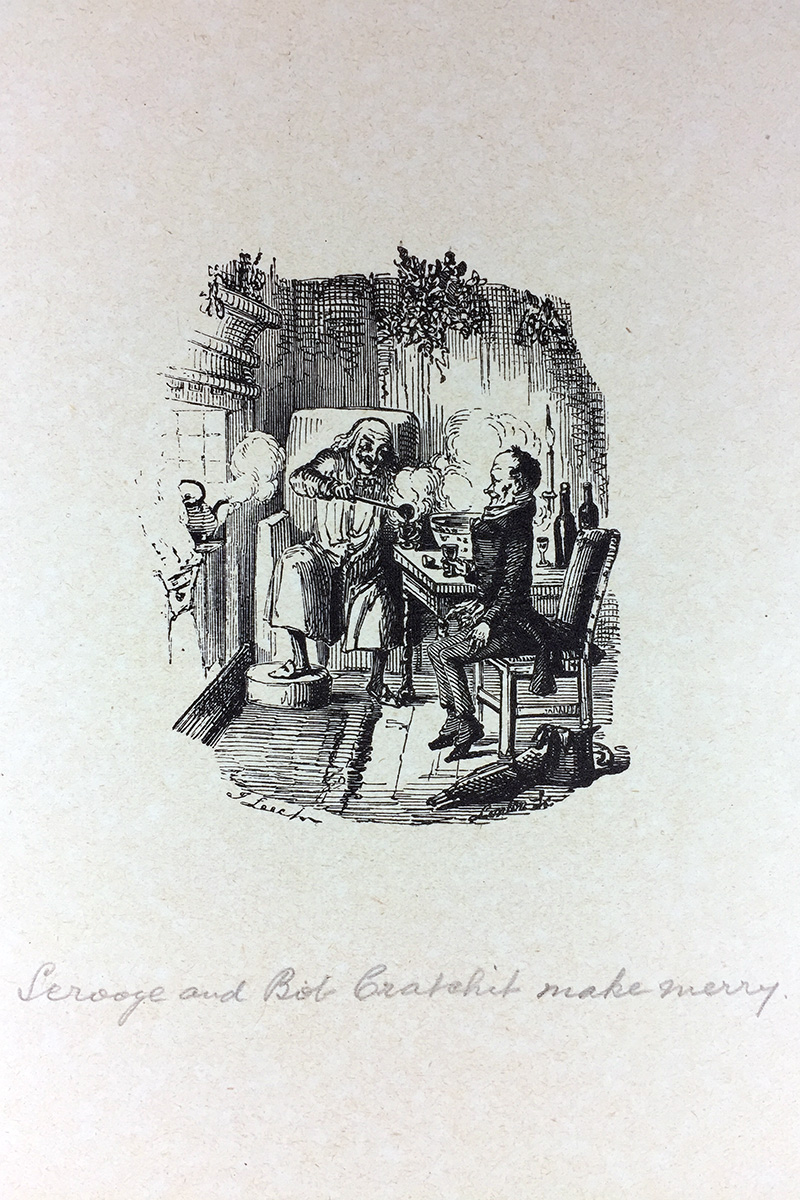
Between July 1937 and March 1938, Nonesuch Press—under the direction of George Macy—set out to publish what it billed as the most extensive collection yet made of Charles Dickens’s writings. It had already been an energetic few years. Macy founded the subscription-based Limited Editions Club in 1929, and the Heritage Press in 1935, before acquiring London-based Nonesuch Press in 1936. Nonesuch’s practice of teaming up a small hand press for design and commercial printers for production allowed for a wider circulation of its fine-press quality books.
In addition to the 23-volume Dickens set, Nonesuch’s ambitious 1937 winter publication roster included a reprint of Virgil’s Eclogue I with illustrations by William Blake and the first reprint of a 1783 translation of Rousseau’s Confessions. In the midst of the hardships of the Depression, Macy billed these Nonesuch publications as modest luxuries whose anticipated popularity signaled better economic times to come.
Volume 4 of The Nonesuch Dickens was devoted to the writer’s Christmas Books. Published in late autumn of 1937, the volume comprises “A Christmas Carol,” “The Chimes,” “The Cricket on the Hearth,” “The Battle of Life,” and “The Haunted Man.” To illustrate the series, Macy and book designer Francis Meynell acquired the 877 steel plates and wood blocks that had been used to illustrate the 1836–1870 first editions of Dickens’s works. Among the plates and blocks were nine by John Leech that had been originally produced for Chapman & Hall’s 1843 The Christmas Carol.

That 1843 first edition featured hand-colored prints of Leech’s illustrations. Jovial couples dance under the mistletoe at Mr. Fezziwig’s Ball on the frontispiece. In Stave I, a plate depicts Scrooge confronted at his meager fireside by the spirit of former business partner Jacob Marley; here, the candle flame itself has taken on a portending, ghostly countenance. Later plates illustrate Scrooge’s encounters with the Ghosts of Christmas Present and Future. Several smaller, uncolored prints are also included throughout the text.
By Christmas Eve of 1843 Chapman & Hall’s first edition had sold out. A number of subsequent editions—and illicit copies—were produced in the years to follow, heralding the story’s enduring popularity.

For his Nonesuch publication Macy reproduced Leech’s prints from the original 1843 plates. As with the 1843 prints the Nonesuch prints were hand-colored, to very similar effect as the originals, and these appeared alongside Dickens’s text as revised for publication during the author’s lifetime. In A Christmas Carol Macy found a story with significant value in reproduction. Via the Limited Editions Club he had printed A Christmas Carol in Prose three years earlier, in 1934; that edition was limited to 1500 copies and included original illustrations by Gordon Ross. In 1939 Macy would again publish the story as part of Dickens’s Five Christmas Novels, this time through Heritage Press and with illustrations by Reginald Birch.

For his Nonesuch Dickens, Macy restricted the set to 877 copies—the exact number of plates and wood blocks that had been purchased from Chapman & Hall. Hoping to generate greater interest in the set, Macy announced that each subscriber would receive with their 23 volumes one of the original plates or blocks. The plates were presented in custom-fit boxes, handsomely bound in linen buckram and designed for shelf-display alongside the volumes. Each was accompanied by a print and a letter of authenticity from Chapman & Hall.
The Ransom Center’s collection includes two of these original plates: a steel plate by artist Phiz (the pen name of Hablot Knight Browne) for The Pickwick Papers, 1837, and a wood engraving of a George Cruikshank drawing for Sketches by Boz, 1836. The latter has an interesting story of its own—it was originally owned by author Evelyn Waugh.
The Ransom Center has a large collection of Dickens’s works published by Macy’s companies, Chapman & Hall, and others. Researchers can also explore the records of George Macy Companies, Inc., and view the trial proofs of the Nonesuch illustrations to Dickens’s works in our Reading and Viewing Room.